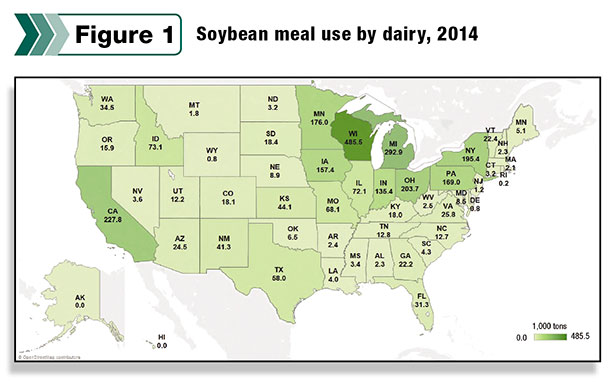The nation’s soybean growers have a vested interest in the policy issues facing dairy producers, according to a report commissioned by the United Soybean Board.
The study, funded by the soybean checkoff, was prepared by Decision Innovation Solutions. It details animal agriculture’s impact on the U.S. economy, employment, household earnings and income and property taxes. It also looks at animal agriculture as a customer base for soybean meal.
According to the Economic Analysis of Animal Agriculture, during 2014 alone, U.S. animal agriculture’s support of the national economy included:
• $440.7 billion in economic output
• 2.36 million jobs
• $76.7 billion in earnings
• $19.6 billion in income taxes
Animal agriculture is U.S. soy’s top end user, consuming 97 percent of soybean meal. During 2014, U.S. animal agriculture consumed an estimated 27.9 million tons of soybean meal, or the meal from about 1.2 billion bushels of U.S. soybeans.
Of that total, dairy animals ranked third, behind broilers and hogs, consuming about 112 million bushels of soybeans.
The report also offers a state-be-state look at livestock production and soybean use. Leading dairy states and soybean meal (tons) consumed in 2014 were as follows (Figure 1):
1) Wisconsin: 485,600
2) Michigan: 292,900
3) California: 227,800
4) Ohio: 203,700
5) New York: 195,400
6) Pennsylvania: 169,000
7) Minnesota: 176,000
8) Iowa: 157,400
9) Indiana: 135,400
10) Idaho: 73,100
U.S. animal agriculture is facing numerous regulatory challenges, including manure/environmental management, animal welfare, animal identification and traceability, immigration and labor issues.
The 766-page report concludes U.S. soybean farmers shouldn’t let their support for the animal ag industry weaken at a time of increased food needs of a growing global population.
Read Economic Analysis of Animal Agriculture. PD

-
Dave Natzke
- Editor
- Progressive Dairyman
- Email Dave Natzke





